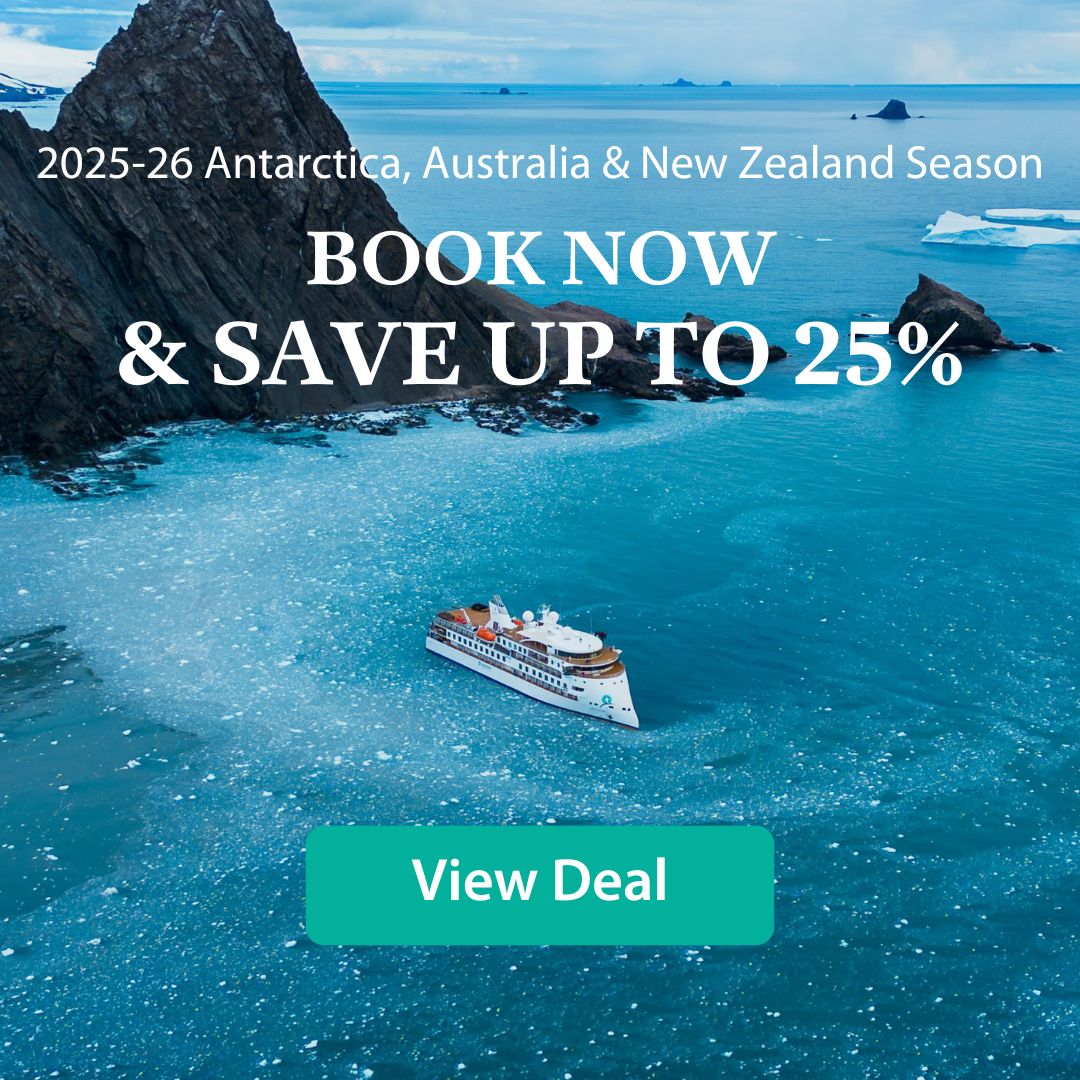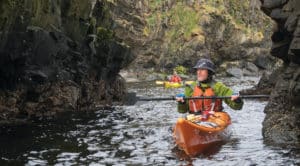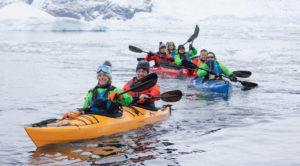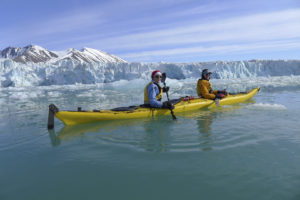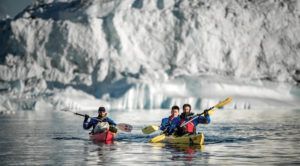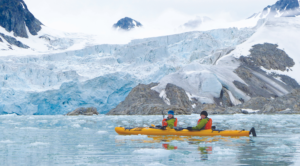Home > Expeditions > Epic Antarctica: Crossing the 7th Continent
Epic Antarctica: Crossing the 7th Continent
- 34 Days
- Departure/Arrival:
- Dunedin, New Zealand - Ushuaia, Argentina
- Voyage code:
- ASC001D
- Voyage type:
-
Polar Expedition
- Ship:
- Douglas Mawson
- Price:
-
USD $43,795.00
from USD $37,225.75/pp
Save 15%*
Summary
Welcome to Aurora Expeditions’ Epic Antarctica: Crossing the 7th Continent expedition.
Calling all pioneers, history buffs and adventure lovers for an epic adventure across the southern seas. Follow in the footsteps of explorers such as Scott, Ross, Amundsen and Shackleton and embark on a journey very few people on this planet have made. Sail beyond the Antarctic Circle, uncover wonders of the Ross Sea, explore the Peninsula and the incredible sights in between! This is a once-in-a-lifetime opportunity to witness the beauty and majesty of this remote and pristine environment.
Highlights
- Skirt rowdy beaches crowded with harems of New Zealand (Hooker’s) sea lions to reach rātā forests where rare yellow-eyed penguins can be found.
- Revel in the richness of the unique Ross Sea ecosystem, part of the Ross Sea Region Marine Protected Area and a Sylvia Earle Mission Blue “Hope Spot”.
- Navigate through gleaming pack ice alive with Weddell and leopard seals, Adélie and emperor penguins and whales feeding in fathomless leads.
- Reflect on the remarkable achievements of the Heroic Age explorers as we attempt to visit some of their beautifully preserved historic huts (conditions permitting).
Gallery
Please note, we gain a day on this voyage as we cross the International Date Line.
Aurora Expeditions actively monitoring developments around Avian Influenza outbreaks closely and is in constant communication with key authorities such as IAATO. We have implemented enhanced biosecurity measures for arrival in Antarctica and reinforced our onboard protocols, and our expedition team will continue to closely assess each landing site to ensure to determine any risks.
Aurora Expeditions operates in remote and challenging environments, and in the spirit of expedition travel, we encourage you to adopt a flexible and adventurous attitude when joining our voyages. This itinerary is a guide only and is subject to change due to permitting and regulatory approvals; and weather, sea state and other conditions beyond our control.
Macquarie Island and the New Zealand Subantarctic Islands are protected areas where all visits are subject to permit approvals and quota allocations that are carefully managed by Tasmania’s Parks and Wildlife Service and New Zealand’s Department of Conservation, respectively.
Itinerary
Day 1 Arrive Dunedin
Arrive in Dunedin, where you will be met by a representative of Aurora Expeditions and transferred with your fellow expeditioners to your assigned pre-voyage hotel. If you are already in Dunedin, we ask you to make your way to your hotel. This afternoon, visit the Aurora Expeditions hospitality desk in the lobby to collect your luggage tags. Please clearly label the tags with your name and ship cabin number. Our team will confirm details regarding your embarkation day, answer any questions and provide you with information on where to dine or purchase last minute items.
That evening, enjoy light refreshments as you meet your fellow expeditioners at a Welcome Reception and Pre-Embarkation Briefing. Afterwards, enjoy your evening in New Zealand’s southernmost city. You may like to indulge in a meal at one of Dunedin’s fine restaurants, or perhaps enjoy a leisurely stroll along the picturesque Otago harbour.
Assigned accommodation: To be advised
Day 2 Embarkation
This morning, enjoy breakfast and check-out. Please ensure your cabin luggage is fitted with cabin tags clearly labelled with your name and cabin number. By 11.00 am, take your cabin luggage to hotel reception, prior to, or at check-out. Your luggage will be stored and transferred directly to the port for clearance, to be placed in your cabin ahead of your arrival on board. Please keep any valuables or personal items with you throughout the day.
Your morning is at leisure to explore Dunedin.
Settle into your cabin, where each detail was designed with your comfort in mind. This luxurious vessel is yours to explore! As we throw the lines and set sail, join your expedition team on deck before tucking into a delicious dinner, and toast to the voyage ahead.
Day 3 At Sea
On an expedition such as this, the journey is as significant as the destination. Sea days are a wonderful opportunity to relax, meet your fellow travellers and learn about the history, environment and local wildlife in this fascinating corner of the globe.
As you acclimatise to life on board, your expedition team is available to answer any questions you may have and offer pro-tips on photography and birdwatching. With decades of collective experience in the region, they love to share their expertise and enthusiasm with fellow travellers. Join them in the lecture room for entertaining talks and presentations to enrich your understanding of the wildlife, landscapes and historic sites we hope to encounter.
You may like to pamper yourself with a sauna, a visit to the Wellness Centre, or work out at the onboard gym. While away the hours spotting seabirds on deck, curl up with a book in our well-equipped polar library, or chat with your fellow expeditioners at the bar.
Days 4-6 New Zealand’s Subantarctic Islands
First visited by Māori navigators centuries ago, these islands are of great significance to Ngāi Tahu, the indigenous peoples of New Zealand’s South Island. Their natural beauty and astonishing biodiversity have now been recognised globally, but few have had the privilege to visit these far-flung shores, which are now yours to explore.
Day 7 At Sea
As Campbell Island slips over the horizon, keep watch for Campbell, Salvins and white-capped albatross, which may follow the ship to bid us farewell as we continue south.
Join your expedition team in the lecture room to hear about the fascinating human history of Macquarie Island, and how to identify the unique and charismatic creatures we hope to see in the coming days.
Days 8-9 Macquarie Island
“Penguins were in thousands on the uprising cliffs, and from rookeries near and far came an incessant din . . . seabirds of many varieties gave warning of our near approach to their nests” Douglas Mawson, 1911.
As they sailed towards Antarctica, Mawson and his men encountered ‘an exquisite scene’. Macquarie Island (known affectionately as Macca) rises steeply from the Southern Ocean in a series of emerald summits: a beautifully fierce, elemental landscape teeming with life.
Keep your binoculars handy because this subantarctic refuge is home to 3.5 million breeding seabirds, including no less than four species of penguin! Alongside boisterous colonies of tuxedoed kings, charming gentoos, robust rockhoppers and endemic royal penguins, you’ll find three types of fur seals and a large proportion of the world’s elephant seals. Layer up and head out on deck to experience the sound, sight (and smell!) as you approach one of the largest concentrations of life in the Southern Ocean.
Remember to keep an eye out for Macca’s kelp forests—these remarkable underwater ecosystems are quite mesmerising as their fronds sway back and forth on the water’s surface.
In addition to being a globally recognised and protected wildlife refuge, Macquarie Island played an important role in Antarctic history. It was here, in 1911, that five men disembarked Mawson’s Aurora and established a radio relay station which would transmit the first communication from Antarctica to the outside world.
Days 10-12 At Sea
As Macquarie Island slips over the horizon, keep watch for wandering, grey-headed, black-browed and light-mantled albatross, which may follow the ship to bid you farewell as you continue south.
Close observers may notice a subtle change in the character of the sea as we cross the Antarctic Convergence. Beyond this belt where the waters of the north and south mix, the sea surface temperature drops by about 4°C (39°F), signalling our entry into the Antarctic. This transition zone is known for its nutrient-rich waters, so keep watch for porpoising penguins, flocks of fluttering Antarctic petrels, or perhaps the more solitary snow petrel. You’re not far from the Antarctic Circle, so your first iceberg can’t be far away!
Sea days are a great opportunity for some R & R as you digest your subantarctic experiences and prepare for the next phase of your voyage. Relax and unwind your way, perhaps meeting newfound friends at the bar, treating yourself to a sauna, or editing some images in the comfort of your cabin. And join your expedition team in the lecture room for presentations on the charismatic wildlife and extraordinary adventures that took place along the epic Antarctic coastline you are about to experience.
Days 13-18 Ross Sea
It’s almost impossible to describe the feeling of arriving in this storied, ice-bound sector of Antarctica. Stepping outside and taking a deep breath of some of the most fresh, crisp air on earth is an experience to cherish forever.
The Ross Sea region is a globally significant wildlife sanctuary. Its nutrient-rich waters support an astonishing array of uniquely adapted Antarctic species, including Ross Sea orcas, Antarctic petrels and South Pacific Weddell seals. It is also home to Antarctica’s largest Adélie penguin colony, and many of the largest emperor penguin colonies. The unique biodiversity of the Ross Sea has been protected within the world’s largest marine protected area since 2016.
The human heritage of the Ross Sea coast is equally impressive. Since James Clark Ross discovered the region in 1841, countless expeditions have built base camps on scattered ice-free slivers of land, using them as staging posts for bold forays across the polar plateau. Many of them departed in a hurry, leaving artefacts, scientific equipment and sometimes entire huts behind. Today these sites are preserved as open-air museums and protected under the Antarctic Treaty System.
Embrace the spirit of exploration as your expedition team designs your voyage from day to day, bringing decades of experience to selecting the ideal sites based on the prevailing weather, ice conditions and wildlife opportunities.
Some places we may visit include:
Ross Ice Shelf
Find a spot on deck as we cruise perfectly cleaved ice cliffs towering some 30 metres above the crystalline waters of the Ross Sea. This is the floating edge of the largest ice shelf in Antarctica, which covers an area the size of France. Watch for elegant emperor penguins, sweet-faced Weddell seals hauled out on ice floes, and the unmistakable ‘pouf’ of an orca’s exhalation.
Franklin Island
This delightful ice-free outpost with a rookery of rambunctious Adélie penguins is well worth a visit. Stretch your legs as you stroll up a gentle incline past the colony to a high point, where panoramic views of the Ross archipelago and the ice shelf unfurl.
McMurdo Sound
Enter a realm of exquisite beauty, an otherworldly icescape set against a backdrop of gleaming glaciers, shimmering mountains, and the polar ice sheet itself. McMurdo Sound is the historic gateway to the South Pole and remains a busy working harbour today, serving as a logistics hub for the extensive scientific operations taking place at the McMurdo and Scott Research bases on Ross Island.
It is here, in this achingly barren landscape, that early explorers established their base camps and struck out for the South Pole. If conditions allow, we aim to land at one (or more) of their beautifully preserved huts, many of which still stand, to dwell for a moment amongst the artefacts of a distant time, and reflect on the triumphs and tragedies of those who brought them here.
Cape Washington, Terra Nova Bay
Bounded by soaring peaks and fed by immense glaciers, Terra Nova Bay supports an abundance of polar wildlife, including the rarely sighted Arnoux's Beaked Whale. Fast ice anchored to the bay’s northern shore in the shelter of Cape Washington is home to one of the largest known emperor penguin colonies. Some 20,000 males huddle here each winter, incubating their eggs and awaiting the sun’s return. Weather and ice permitting, visit the bustling rookery to witness the delightful emperors and their fledging chicks.
Cape Hallett
The snow-capped Admiralty Mountains rise dramatically from the gravelly spit of Cape Hallett, where we hope to land. This is the site of a decommissioned scientific base and an abundance of Antarctic mosses, lichens and invertebrates, protected by the Antarctic Treaty System.
Amble across gently undulating terrain, taking care to give resting Weddell seals a wide berth. The Adélie penguin rookery here can host close to 50,000 breeding pairs, while snow petrels, Wilson’s storm petrels and South Polar skuas breed in the rocky crevices nearby.
Cape Hallett also has a special significance for Aurora. It was from this rocky foothold that Greg Mortimer, co-founder of Aurora Expeditions, launched the Australian Bicentennial Antarctic Expedition in 1988. Cape Hallett provided access to the glaciated coastal ranges beyond, where the six-man team completed the first ascent of Mt Minto (4,165 metres).
Cape Adare
Cape Adare lies 100 km (62 miles) north of Cape Hallet, at the western entrance to the Ross Sea. A rare ice-free refuge on this icebound coastline, Cape Adare is home to Antarctica’s largest Adélie penguin colony. Ice and weather permitting, wend your way through the pack ice to land on the flat, cobbled spit where more than 250,000 breeding pairs of Adélies gather to busily breed, feed and raise their chicks in the short southern summer.
First visited by James Clark Ross in 1841, this rocky promontory played an important role in the pioneering expeditions of the Heroic Age of Antarctic exploration. It was here in 1899 that the Southern Cross expedition, led by Carsten Borchgrevink, became the first to winter over in Antarctica and establish the first human structures on the continent.
The remnants of these pioneering constructions, and thousands of artefacts scattered in their vicinity, remain virtually untouched and protected under the Antarctic Treaty System. We hope to enter Borchgrevink’s living quarters to experience the awe and imagine the perils of conducting science here, as they did, through an Antarctic winter.
Days 19-26 Expedition Cruising, Cross the International Date Line
As you reach the halfway mark of your voyage, these days at sea offer time and space to reflect on the emotions and special moments you’ve experienced so far. You may like to make some notes in a journal, reminisce with newfound friends at the bar or start editing a backlog of amazing photos.
For the next week, find your rhythm and settle into life at sea. Your expedition team will offer a daily program of educational activities, entertainment and citizen science programs, which you are welcome to attend. Join them for lectures and daily recaps of your progress, weather and trajectory. Take advantage of the many shared spaces on board: relax in the sauna, work out in the gym or grab a cuppa and peruse the library shelves as the ice shelves guarding the West Antarctic coast slide by.
There is plenty of time to enjoy the magic of the Southern Ocean and the life that calls it home - especially as you gain a day by crossing the international date line! As always, the best place on the ship is out on deck, where Antarctic prions, snow petrels and great whales await - as long as the seas permit!
As you skirt the forbidding ice cliffs guarding the Antarctic ice sheet, spare a thought for British explorer James Cook, whose historic circumnavigation of Antarctica in the late 18th century encountered nothing but treacherous ‘ice islands’ and perilous winds that threatened to blow their wooden sailboat into the sea ice. Cook left the region firm in the belief that no Antarctic continent could exist, and if it did it “that the world will derive no benefit from it”. The search for Antarctica, which had been going for hundreds of years, ground to a halt, only resuming when a merchant sailor named William Smith chanced upon the South Shetland Islands in 1819. This discovery sparked visits from the sealers, whalers and scientists who would define the earliest eras of Antarctic exploration.
Your voyage continues west past the Amundsen and Bellingshausen Seas, towards the southern extremity of the Antarctic Peninsula.
Days 27-31 Antarctic Peninsula
While on the Peninsula we generally make landings or Zodiac excursions twice a day. Rug up and join a Zodiac cruise to view spectacular ice cliffs or explore grounded icebergs, keeping an eye out for whales, seals and penguins, which frequently travel and feed in these waters. Zodiacs will also transport you from the ship to land, where you can visit penguin rookeries, discover historic sites and explore some of our favourite spots along the Peninsula.
While ashore we aim to stretch our legs, wandering along pebbly beaches or perhaps up snow-covered ridgelines to vantage points with mountains towering overhead and ice-speckled oceans below. If you have chosen an optional activity, you will have the option to do that whenever conditions allow, and of course keen polar plungers will have the chance to fully immerse themselves in polar waters - conditions permitting!
In addition to Zodiac cruises and shore excursions, we may ship cruise some of the narrow, dramatic straits separating offshore islands from the mainland, or linger in scenic bays to marvel at sculptural icebergs and photograph spectacular scenery. This is a great time to enjoy panoramic views from the observation lounge or make your way to the bridge (open at the Captain’s discretion) for uninterrupted views of Antarctica in all its splendour. Keep an ear out for the creak and deep rumble of glaciers as they break off, calving into the sea. Take a quiet moment to experience the wonder of this incredible white continent.
Days 32-33 At Sea
The South Shetland Islands is a volcanic island group around a day’s sail from the Antarctic Peninsula. We aim to land or Zodiac cruise at one of the many appealing coves, bays and beaches, with the opportunity to see chinstrap and gentoo penguin colonies, fur and elephant seals, and the historic remnants of the sealing and whaling age.
In the afternoon, begin your transit north across the Drake Passage.
As your journey draws to a close, take some time to reflect on the experiences of the past few weeks. Perhaps you’d like to organise your photos, jot some more notes in your journal or simply relax and soak up the ambiance on board as you farewell your travel mates . . . until next time!
We hope you become ambassadors for the great Southern Ocean, advocating for its conservation and preservation, and share your experiences with your loved ones, so they might visit and become ambassadors themselves.
Day 34 Disembark in Ushuaia
During the early morning, we cruise up the Beagle Channel, before quietly slipping into dock in Ushuaia, where we will be free to disembark around 8.00 am. Farewell your expedition team and fellow passengers as we all continue our onward journeys, hopefully with a newfound sense of the immense power of nature.
Upon disembarkation, for those continuing their travels in the region, transportation to the hotel will be arranged exclusively for guests who have booked their accommodations through Aurora or for those staying in downtown areas near the port. Expeditioners departing on flights prior to 12:30 pm will be directly transferred to Ushuaia Airport, those with flights after 12:30 pm will have the opportunity to explore Ushuaia before an afternoon airport transfer, and the transfer procedures and details will be communicated onboard before disembarkation.
Note: At the conclusion of the voyage, we do not recommend booking flights departing Ushuaia prior to 12.00 pm on the day of disembarkation in case there are delays.
Inclusions
- All airport transfers mentioned in the itinerary.
- One night’s hotel accommodation including breakfast, in Dunedin on Day 1.
- Onboard accommodation during voyage, including daily cabin service.
- All meals, snacks, tea and coffee during voyage.
- Beer, house wine and soft drinks with dinner.
- Captain’s Farewell reception including four-course dinner, house cocktails, house beer and wine, non-alcoholic beverages.
- All shore excursions and Zodiac cruises.
- Educational lectures and guiding services provided by Expedition Team.
- Complimentary access to onboard expedition doctor and medical clinic (initial consultation).
- One 3-in-1 waterproof, polar expedition jacket.
- Complimentary use of Muck Boots during the voyage.
- Comprehensive pre-departure information.
- Port surcharges, permits and landing fees.
- Wi-Fi*.
* Please note we travel to remote regions and therefore the connection can be unreliable.
Exclusions
- International or domestic flights – unless specified in the itinerary.
- Transfers – unless specified in the itinerary.
- Airport arrival or departure taxes.
- Passport, visa, reciprocity and vaccination fees and charges.
- Travel insurance or emergency evacuation charges.
- Hotel accommodation and meals – unless specified in the itinerary.
- Optional excursions and optional activity surcharges.
- All items of a personal nature, including but not limited to alcoholic beverages and soft drinks (outside of dinner service), gratuities, laundry services, personal clothing, medical expenses or phone charges.
Note: A $15 USD per person per day gratuity for the crew is automatically added to your onboard account. It is at your discretion if you would like to remove the tip (or adjust the amount) when you settle your bill. It is not necessary to tip the expedition team members. This gratuity amount is included for suites as part of their ‘Suite Benefits’.
Included Activities
Bird watching
Lectures on wildlife, our environment, history and destinations
Near shore cruises
Polar plunge
Photography
Trips ashore
Walking
Whale and mammal spotting
Zodiac cruises
Add-on Activities
Sea Kayaking
From USD $1,330.00/pp
Sea Kayaking Vacations One of the most exhilarating ways to experience Antarctica, the Arctic and beyond. Sea kayaking holidays in …
Sea Kayaking
Sea Kayaking Vacations
One of the most exhilarating ways to experience Antarctica, the Arctic and beyond.
Sea kayaking holidays in the humbling wilderness of Antarctica, the Arctic, and some of the world’s most biodiverse regions, are guaranteed to stir your soul. Paddle around brash ice and near icebergs of all shapes and sizes, absorbing the majestic scenery as it unfolds before you.
This Kayaking Program was created by kayakers for kayakers! Our program style offers the chance to develop and enhance your skills and to connect with our expert guides and your fellow Expeditioners. Participating with the small group through your voyage will minimise wasted time with briefings and equipment tryouts and maximise time on the water.
All of our Expert Guides are professional kayak guides, who have led trips around the world, specialise in the Polar Regions and have been chosen for their passion for the sport.
Kayaking is one of the best ways to access and intimately explore the beautiful coastlines we visit and make the most of your time in the wild and remote destinations we visit.
You have the option to discuss with the guides what you want out of your trip and they will help with recommendations on when to paddle, when to go ashore and when it’s possible to do both in one outing.
Our purpose-built ships have been designed with the activities in mind, each equipped with dedicated space for our high-end equipment, including Kokatat dry suits, Seals sprayskirts, PFD’s from Astral and paddles from Werner and Aqua Bound.
Please note:
- Kayakers must be 14 years or over. A Parent or Guardian’s signature is required for participants between 14 and 18 years old.
- There is upper size limit in the drysuits we provide onboard. If you cannot find a suitable size within our range and you would like to bring your own, please contact our Activity Specialist to discuss in more detail.
- Travel Insurance is mandatory on all Aurora Expeditions voyages. An additional policy or premium may be required to ensure you have adequate coverage for including this activity.
Sea kayaking holidays in the humbling wilderness of Antarctica, the Arctic, and some of the world’s most biodiverse regions, are guaranteed to stir your soul. Paddle around brash ice and near icebergs of all shapes and sizes, absorbing the majestic scenery as it unfolds before you.
This Kayaking Program was created by kayakers for kayakers! Our program style offers the chance to develop and enhance your skills and to connect with our expert guides and your fellow Expeditioners. Participating with the small group through your voyage will minimise wasted time with briefings and equipment tryouts and maximise time on the water.
Kayaking is one of the best ways to access and intimately explore the beautiful coastlines we visit and make the most of your time in the wild and remote destinations we visit. You have the option to discuss with the guides what you want out of your trip and they will help with recommendations on when to paddle, when to go ashore and when it’s possible to do both in one outing.
Our purpose-built ships have been designed with the activities in mind, each equipr with dedicated space for our high-end equipment, including Kokatat dry suits, Seals sprayskirts, PFD’s from Astral and paddles from Werner and Aqua Bound.
‘Getting out amongst it’ is our philosophy, and that is exactly what we do. Weather permitting, the sea kayaking activity is normally available anytime the other expeditioners go out. Rather than travelling large distances, our aim is to ensure you see as much as possible. We paddle between 5 to 15 kilometres (2 to 4 hours) per outing, often offering a combination of both kayaking and onshore landings so you won’t miss out.
Each small group of kayakers (up to 10 per guide) will have their own intimate exploration of the small hidden bays and coasts that are inaccessible to Zodiacs. Of course, we also make time for your own shore excursions and wildlife encounters.
The elements play an important role in our sea kayaking program. It is important that you have an adventurous attitude and understand that the weather can impact our kayaking time.
The level of experience required differs slightly depending on the region you are visiting. For all trips, a basic level of sea kayak experience is required, equivalent to that gained in a half day Paddle Australia “Intro Sea Skills” course. You do not need to be an expert or know how to roll; however, it is encouraged that you are comfortable in a sea kayak in the ocean, and are required to be able to swim, have a moderate level of physical fitness, and no medical conditions that prevent you from safely participating. We are happy to assist you with any preparation you may need or want prior to your voyage.
Our guides do not offer instructional classes for beginners. Therefore, the sea kayaking option is unsuitable for complete novices. If your experience is limited, we encourage you to contact us to discuss your suitability. There is often ample time to gain the required experience before you depart.
Your guide will assess your ability on the initial paddle, and if you have insufficient experience, he or she reserves the right to restrict your participation in rougher conditions.
You should be fit enough to paddle for 15 minutes without stopping at a moderate pace, for up to three hours at a time with breaks. We encourage a moderate level of fitness and recent kayaking experience as much as possible.
Polar regions
During summer the air temperature in the Antarctic Peninsula, Greenland and Spitsbergen are generally above freezing but can range from -4°C to +5°C / 24.8°F to 41°F. The water temperature in the polar regions is close to freezing and winds sweep off the glaciers, making paddling a chilling experience. Scotland, Iceland, Norwegian coasts are warmer with water temperatures of around 12°C / 53.6°F. In the Antarctic Peninsula, and Svalbard we often paddle in sheltered locations with generally calm conditions. In exposed locations places like South Georgia, we often encounter stronger wind and more challenging paddling conditions. Your guides will be constantly searching for a way to get you out safely and enjoyably.
Temperate regions
The northern waters in Scotland, Faroes, Iceland and Norway are warmer than the polar regions but water temperatures of around 12 °C/ 53.6°F mean you may opt to wear your paddle jacket on a warm, sunny day or our dry suits on a cool day. Surf landings are not likely, but you must be capable of paddling in a small swell or wind chop, with winds up to 20 knots. With that being said, we will not paddle if wind conditions are too strong and there is no sheltered area for paddling.
Tropical regions
In Costa Rica and Panama, April is the end of the dry season. The shoulder season begins in May, bringing increased humidity. Afternoon rain showers are possible in May with temperatures ranging from 26-36 °C (80- 96 °F). Winds are generally light at this time of year. The water temperature ranges from 27 -29 °C. Surf landings are not likely, but be prepared to paddle in a small swell or wind chop, with winds up to 15 knots. Again, we will not paddle if wind conditions are too strong and there is no sheltered area for paddling.
The Sea Kayaking activity is available for an additional surcharge and includes guided excursions and kayaking equipment. Fares for this activity start from US$900, AU$1,250, £460 or €550.
Prices are indicative only and are variable. They are calculated based on the days of voyage, ability to carry out the activity and exchange rates.
Aurora Expeditions will be providing kayak booties and dry suits. Below is the measurement chart for the sizes we provide. If you prefer to bring your own dry suit for this activity, please contact our Activity Specialist to discuss the suitability of your equipment.
If you cannot find a suitable size from the options available and you do not have your own custom dry suit, unfortunately we will be unable to accommodate you for this activity.

Top reasons to choose Sea Kayaking
See wildlife unobtrusively
Kayaking is one of the best ways to spot rare wildlife, from penguins to puffins.
Better access
Access intimate bays and coves that bigger crafts can't reach.
Knowledgeable guides
Our experienced sea kayak guides will help bring your chosen destination to life.
Become an expert
Hone your kayaking skills and gain a hobby for life!
Make friends
Become lifelong friends with your small group of like-minded adventurers.
Stay fit on your holiday
Being active every day on your holiday means you don't have to feel guilty about being spoilt by our expert chefs!
Enhance your experience
Add another layer to your once-in-a-lifetime holiday and make the most out of your time in some of the most remote places on earth.
It's fun!
Have the time of your life exploring some of the wildest places on earth from the water.
Sea Kayaking FAQs
There are 20 paces available and our guide to paddler ratio is 1:10 and we provide an accompanying safety Zodiac.
Kayakers must be 14 or over. Parent or Guardian’s signature is required for participants between 14 and 18 years old.
Sea kayaking is offered in place of regular shore excursions. We aim to paddle as often as possible. Depending on the voyage, we generally aim to paddle twice per day.
We will give you a drybag for extra clothing, binoculars and anything that needs to be kept dry. You should also carry a water bottle. We recommend bringing a waterproof camera or phone, or ensuring you have a good quality waterproof case.
If the weather changes during our outing we will head back to the ship and perhaps join a shore excursion. The ship’s captain, expedition leader and kayak guide always maintain close contact to ensure a safe paddling experience. We do not attempt to paddle too far away from the ship. The emphasis is on experiencing the destination rather than travelling long distances.
The kayaks are made with a hard plastic and are easily paddled in swell and conducting shore landings, and through small patches of brash ice. We manoeuvre around the larger ice chunks and floes.
Polar regions
Kayaking in the poles offers a unique wildlife viewing experience. In Antarctica, we have many opportunities to encounter penguins, seals and whales, and occasionally we may even spot leopard seals or orcas. In the Arctic, we’ll paddle under nesting bird colonies, past massive glaciers and around large icebergs, however we maintain a safe distance from polar bears and walruses. Our guides carry rifles and flare guns in the Arctic to ensure your safety against polar bears.
Temperate regions
Kayakers in wild temperate regions will have a unique wildlife experience, with possible encounters with seals and basking sharks. You will have the opportunity to view some of the largest sea bird colonies in the northern hemisphere.
Tropical regions
The superb wildlife-viewing opportunities are endless in the astonishingly biodiverse nature reserves we visit. Kayaks offer a unique opportunity to view marine and land mammals, coral reefs, tropical fish, sea birds and an astonishing range of rainforest birds. We will bring our snorkelling gear with us during our paddles and take advantage of any opportunities to view marine life up close.
In the unlikely event of a capsize, your experienced guide will assist by righting the kayak, stabilising it then pumping it out. Paddlers will re-enter with the guide’s help, or with a support Zodiac. With drysuits and warm clothing underneath you will be comfortable in cold water for up to half an hour. Note that the kayaks have separate compartments with bulkheads, which means they will float after a capsize.
No. Each kayaking place is for one person only. We value a program style that maintains participants through trip to maximise skill progression, group bonding and dynamics, and minimise wasted time with briefings and equipment tryouts.
Contact Us
Sorry, an error occurred.
Staterooms & Prices
Extension Tours
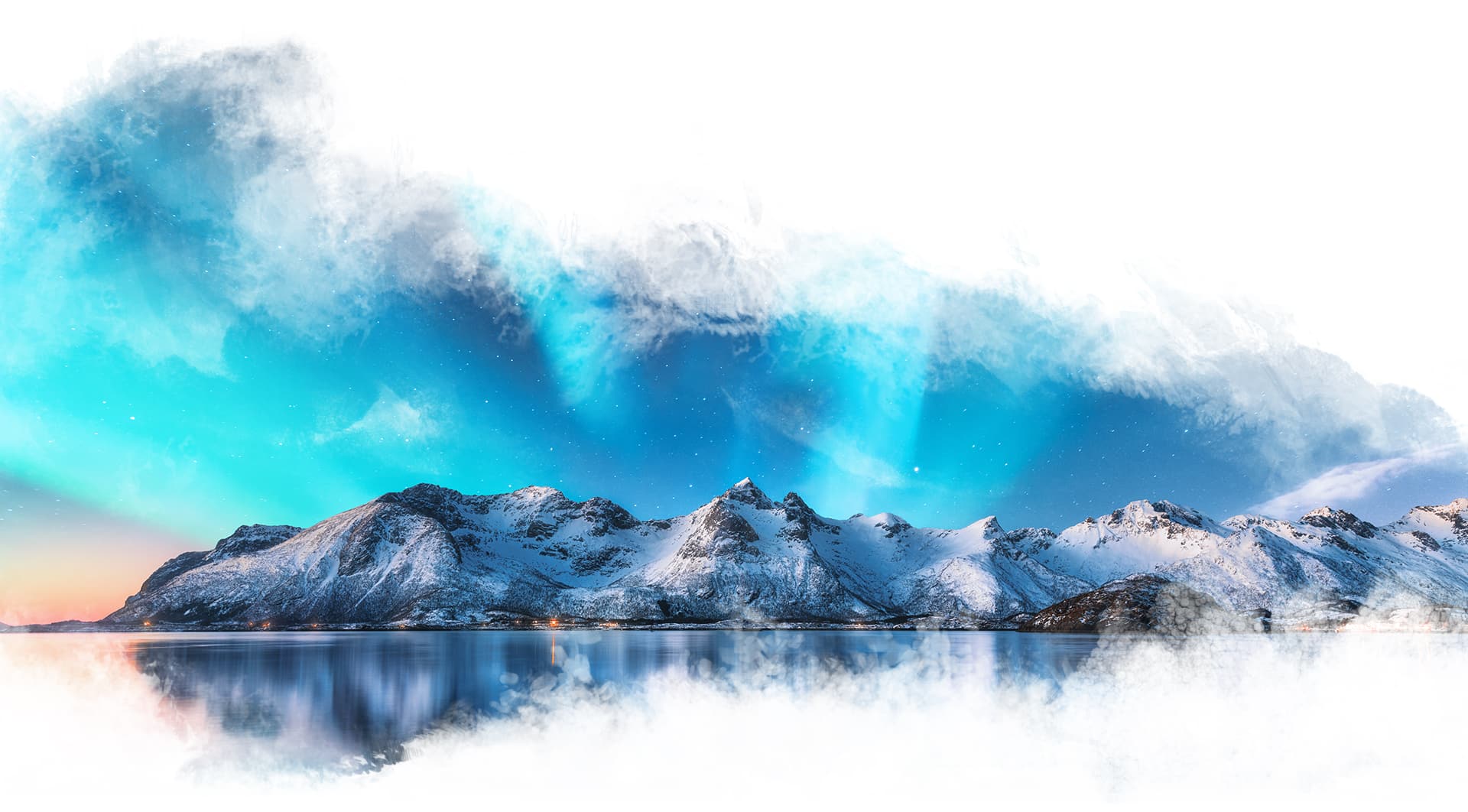
*Terms & Conditions apply. Valid on select ship voyages only. Offer is valid on new bookings only aboard the Greg Mortimer, Sylvia Earle or Douglas Mawson which must be booked and deposited by 31 December 2024. Promotion is subject to availability at the time of booking and capacity controlled. The promotion is only available in conjunction with the back to back voyage discount or the loyalty program offer, and not available with any other offer. The promotion can be withdrawn at any time and is not redeemable for cash. Normal booking terms and conditions apply. To confirm your booking, a completed booking form and non-refundable deposit of $2,500 pp in the booking currency is required within 7 days of reserved berth/s. Additional terms and conditions may apply. Please see full terms and conditions.
^Terms & Conditions apply. Additional 5% discount valid on both voyages but two voyages must connect back to back in terms of dates to be eligible. Offer is valid on new bookings only aboard the Greg Mortimer or Sylvia Earle. Promotions are subject to availability at the time of booking and capacity controlled. The promotion is only available in conjunction with early bird voyage discount or the loyalty program offer, and not available with any other offer. The offer can be withdrawn at any time and are not redeemable for cash. Normal booking terms and conditions apply. Please see full terms and conditions.

